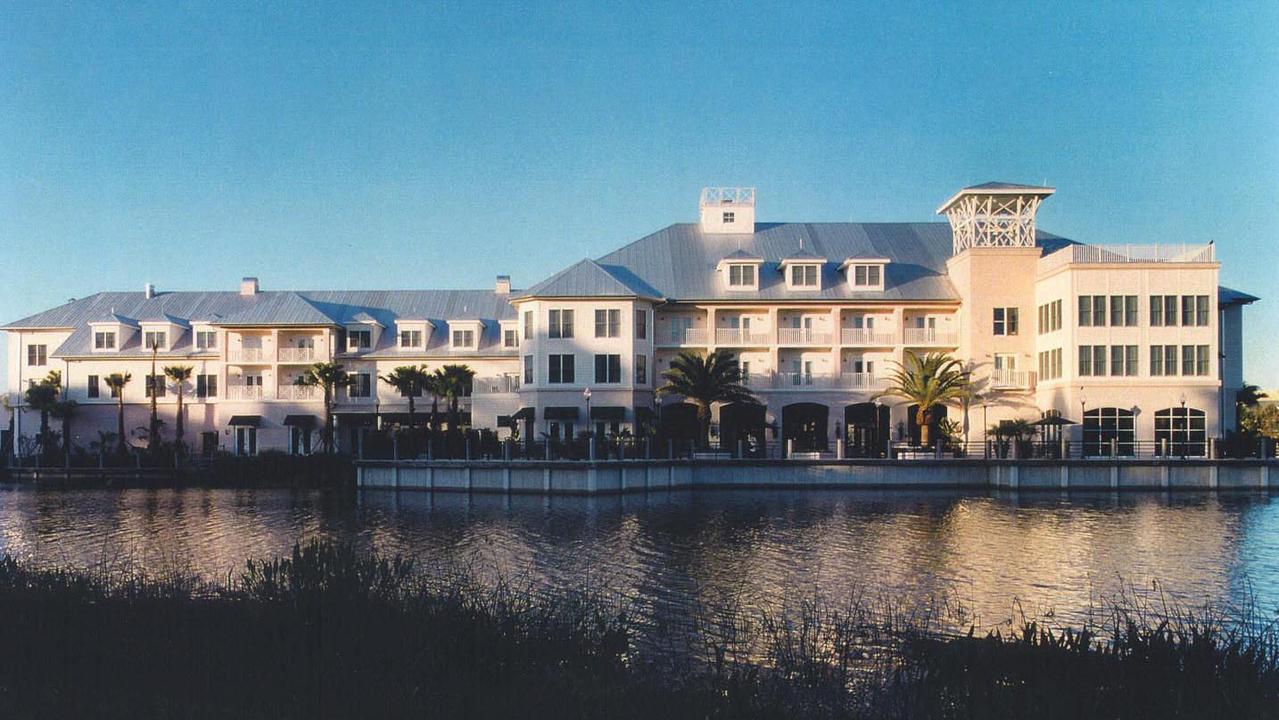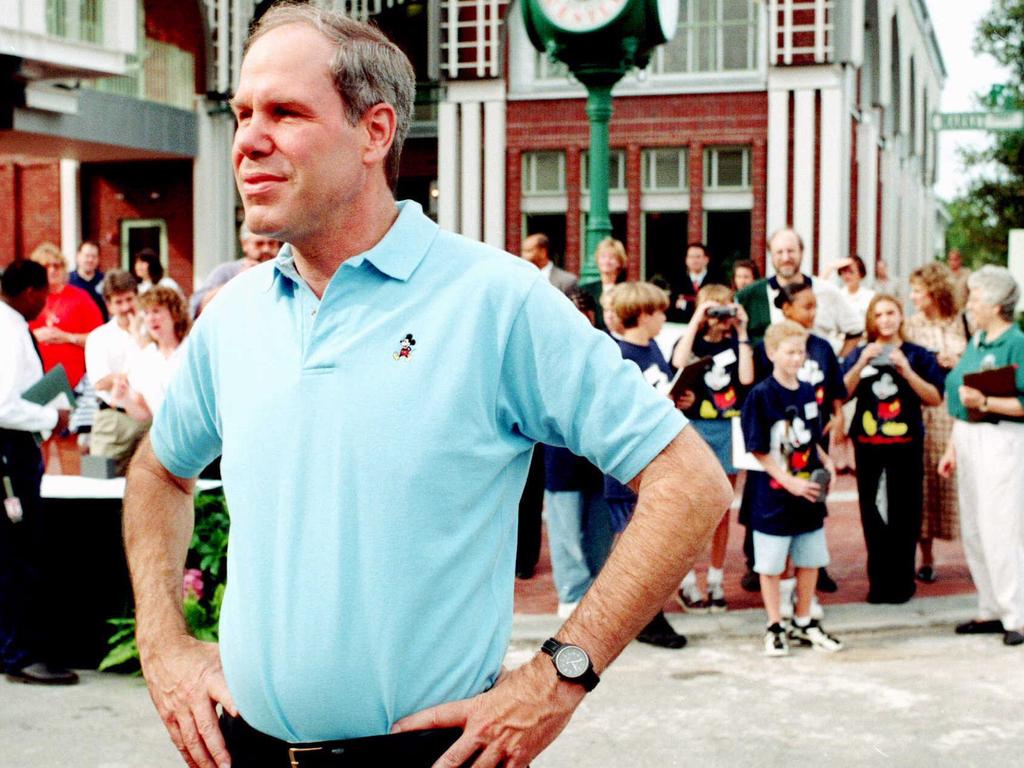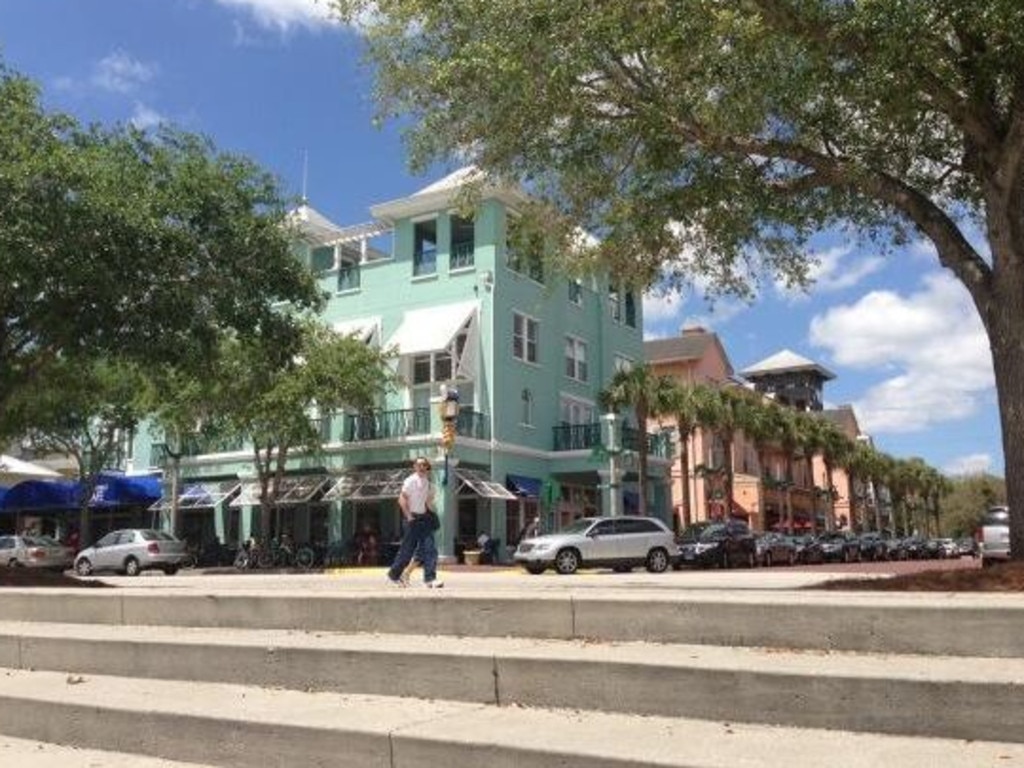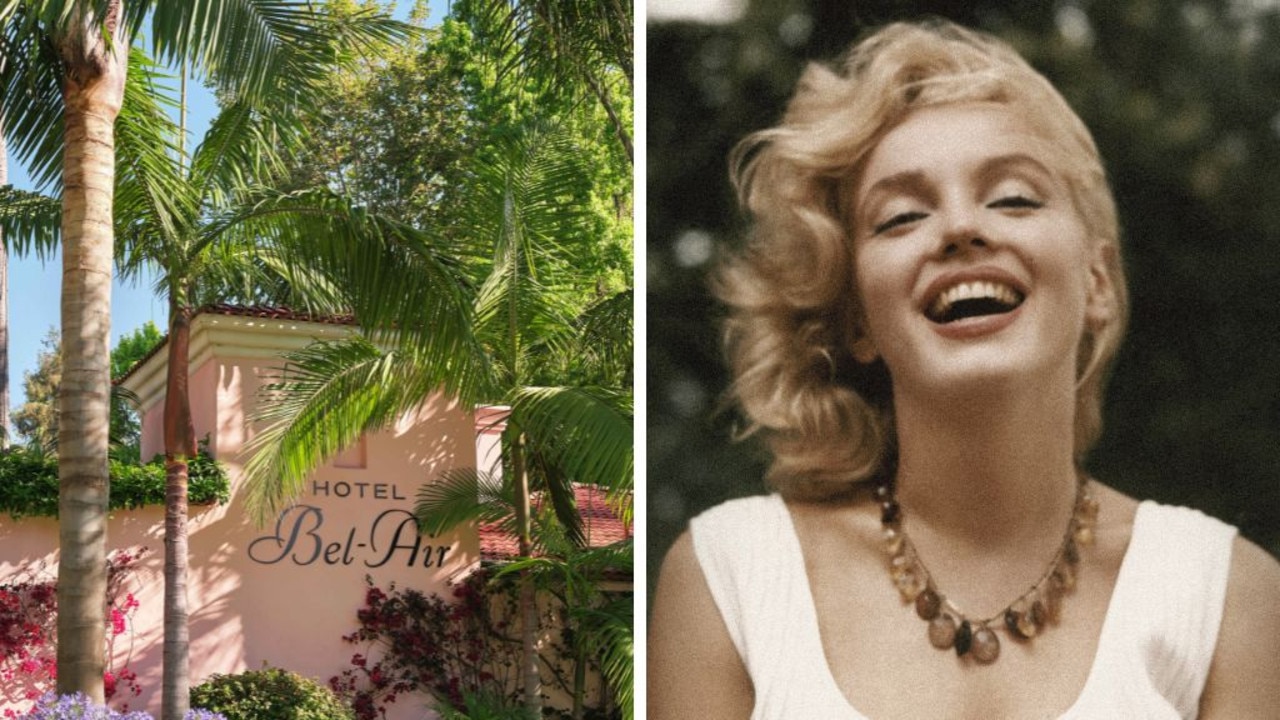The creepy history of Disney’s perfect town
Twenty-three years ago, a company tried to create the ideal town. But there was a very dark undercurrent simmering beneath the dream.
It was designed as the diehard Disney fans’ ultimate dream town.
Celebration was built on the outskirts of Disney World in central Florida — a spectacular array of picture-perfect homes with white picket fences and gleaming facades, immaculate streetscapes and a community that embraced the fantasy and wholesomeness of Disney.
The 10,000-person town was filled with newly minted antique-style homes, and equipped with a progressive school, hospital, and high-tech infrastructure.
The idea behind Celebration was a Disney fantasy: an alternative life in a world that was struggling to maintain family values. If you wanted to embrace a fantasy world, you wanted to live in Celebration.
It was the town Walt Disney would have created if only he’d lived long enough.
Disney invested $4 billion, engaged leading architects and set strict standards of décor. When the first residents moved in, in 1996, anyone would be forgiven for thinking they’d stepped onto the set of the original Stepford Wives movie or The Truman Show.
Residents of Celebration referred to their town as “The Bubble” because it was like living in a separate universe.
But, like many fantasies, there was a dark undercurrent simmering beneath the Disney dream.
Celebration wasn’t quite so Disney after all.
RELATED: Inside the nasty legal battle for Walt Disney’s millions
RELATED: Disney to close its ‘vault’ for good
RELATED: Disney takes control of Hulu after Comcast deal
It began with dodgy buildings and rigid town rules, but soon escalated to a violent home invasion, the murder of a schoolteacher with a dark past, a police stand-off that ended in a suicide and decomposed bodies discovered in cars at the bottom of the nearby “Death Pond”.
The Celebration school was also described as “dysfunctional and weird” and parents started to pull their kids out. For the families that moved into the product of Disney’s “imagineers” 23 years ago, one thing was clear; what was supposed to be a perfect town was far from perfect.
Celebration might have been many things, but it was not a Disney theme park. It was a real town with real problems.

WEIRD RULES AND REGULATIONS
When Disney announced plans in 1994 to build a Disney town, the demand to live there was so high they ran a lottery. Five thousand people entered the lottery for the chance to purchase just 474 homes.
This is how Disney was selling Celebration: “There once was a place where neighbours greeted neighbours in the quiet of summer twilight. Where children chased fireflies. And porch swings provided easy refuge from the cares of the day.
“The movie house showed cartoons on Saturday. The grocery store delivered. And there was one teacher who always knew you had that special something. Remember that place?”
Disney sold Celebration as a nostalgic town which, for many, would be a blissful trip down memory lane. The idea of a planned community was nothing new. What set Celebration apart was that it wasn’t actually “planned” it was — to use a Disney term — “imagineered”.
But for anyone on the outside looking in, Celebration was downright creepy.

Here’s one small example: in the beginning there was a bizarre rule that every house must have a Mickey Mouse hidden somewhere on the property. Tongue in cheek? Perhaps. But many were said to take this rule seriously, along with other rules in the 160-page regulations book that residents were expected to follow.
You’d have to be a Disney fanatic to want to live the “Celebration dream” in the first place. In the words of Sleeping Beauty, “If you dream a thing more than once it’s sure to come true.”
Houses were built to the design of six different models, mostly featuring wide porches, spacious yards and painted white, yellow, pink, tan or blue. Homeowners had a large number of regulations to follow, right down to a list of plants they were allowed in their gardens.
In keeping with the fantasy/artificial look of the town, special lanes were built behind homes so cars and rubbish bins were out of sight.
Residents were only allowed to use certain colours of curtains, they had to keep their lawn at a certain height, and each house must be a different design to its neighbouring house.
Celebration even had its own utility companies as well as a hospital that included a gym and spa. Shopping centre style “muzak” was regularly played from speakers hidden in palm trees, giving Celebration its own bizarre soundtrack.
Other trees had speakers playing never-ending bird song. In winter, residents had fake snow on their rooftops. Disney also installed an ice-skating rink with fake snow falling from trees (made from water and paper).
But, within a few months, the flaws of Celebration began to surface.

DODGY BUILDINGS & A STRANGE SCHOOL
According to author Andrew Ross, there was a belief that Disney could turn its own fantasy into a reality and that persuaded people to take large risks. Hundreds of people uprooted their lives and moved interstate once they were successful in the lottery.
Ross spent a year living in Celebration when he was writing his book, The Celebration Chronicles. One resident told Ross, “People trusted that Disney standards would ensure that the community they were going to live in would be better than most, if not superbly better than most.”
Celebration residents were under the impression Disney would take care of any problems but that was far from the truth.
By 1999 there were so many complaints about leaking roofs and other structural problems, an inquiry was set up to investigate. It found that at least 70 homes needed new roofs.
The inquiry heard that contractors hired by Disney to build the Celebration homes claimed their work was hampered by the quick turnaround between designing and building, as well as having to stick to Disney’s strict style guidelines.
Then there was the Celebration school. It was supposed to be progressive and cutting edge, but parents were pulling their kids out very quickly. What was the problem?
Instead of traditional classrooms made up of 25-30 students with one teacher, the Celebration classes had up to 80 kids from various grades and three teachers. It was said to be so hectic that parents called the school “a waste of time” and complained that there were “serious academic shortcomings.”
Teachers prepared report cards that were said to be incredibly detailed, including blow by blow details with heated criticism of each child. Many families were so disheartened by the school they sold their homes and moved away. The school principal quit in the first year, followed by a quarter of the staff.
ZERO DIVERSITY
The original idea was for Celebration to feature homes of variable prices so there’d be no “rich side” or “poor side” of town.
But that idea was dead once Disney realised the cost of its elaborate town centre and school, as well as the strict architectural guidelines whereby everything had to look perfect/fake. In 1994, homes were selling for a minimum of $124,000, putting the price 20 per cent above the US average at that time.
It was hard to believe that Disney was marketing Celebration as being diverse when the town was 80 per cent white. So, as far as creating a place where diversity thrived, Celebration was yet another classic example of the growing socio-economic divide. This didn’t make Disney look very good at all.
(Interesting fact: Despite being linked to Disney World, shops at Celebration were banned from selling any Disney merchandise.)

THE BUBBLE BURSTS
In 1998 the “perfect town” was rocked by an armed home invasion. Then, in 2010, Celebration resident Matteo Patrick Giovanditto was found strangled and bludgeoned to death in his bed.
David Israel Murillo received a life sentence for the murder of Giovanditto, a schoolteacher who was posthumously accused of being a paedophile who had sexually abused several boys while acting as a mentor.
Murillo told police that Giovanditto tried to rape him after inviting him to his home and asking him to wash his car for money. He reacted to the sexual assault by strangling the teacher before hacking him with an axe.
It was the first and, so far, only murder in Celebration.
(Even though the town was no longer connected to Disney at that time, most Americans still connect the two so it was always going to reflect badly on Disney)
Days later, another resident made national headlines following a 14-hour standoff with police that ended when he shot at a police officer before shooting himself.
Celebration residents pointed out to the media, one murder in 14 years is a statistic few other communities could match. And yet the crimes did much to shatter the Disney town fantasy.
THE DEATH POND
Then there was the “Death Pond”. Just a few kilometres south of Celebration is a large pond and prior to 1998 there was no warnings on the road that, if you took a wrong turn, you risk driving into the water.
There were several incidents that gave the pond it’s macabre name, but the most well-known involved three young men who’d been holidaying in Florida in the summer of 1998 before they mysteriously vanished.
Nine months later, a four-wheel-drive was found at the bottom of the lake, with the men’s decomposed bodies inside. Officials believe the driver misjudged the tricky turn at Celebration and the accident became linked to the town.
This discovery led to rumours that police divers had found at least four other cars in the pond. And now, as you might guess, the pond is supposedly haunted. At least today, there’s a large wall and flashing lights to warn drivers that the pond exists — even if you can’t see it from the road.

CELEBRATION TODAY
Disney sold Celebration in 2004 to a New York company. Yet most of the disgruntled homeowners still blame Disney for the shoddy construction work and lack of maintenance that led to ongoing issues with their houses.
The town that was designed as a replica of Main Street, USA is said to more closely resemble a shantytown these days with many houses desperate for repairs.
When the recession of the late 2000s hit the US, Florida was badly impacted, forcing many Celebration residents to sell. Property prices fell around 60 per cent, the local cinema closed as well as several shops while vandalism and thefts in the town skyrocketed.
Was there anything to Celebrate about Celebration? It depends how you want to look at it. Celebration might have been a dream come true for some but for many others it was a dismal failure. It fed into the desires of Disney fans who were longing for a piece of “The Happiest Place on Earth,” but it fell dismally short.
On the plus side, it was well ahead of its time in discussing the notion of “wellness” decades before Gwyneth Paltrow and GOOP. The hospital had a special section that would not only promote health, but it would promote wellness.
In 1996, Dick Tibbetts from Celebration Health explained the concept of wellness to the BBC.
“What is wellness? Health is more than not being sick; health is feeling good not only physically but mentally so you feel positive about life and embrace life,” Tibbetts said.
(Not surprisingly, the BBC reporter had never heard of “wellness” which is why he asked for an explanation.)
The criticism of Disney and Celebration wasn’t just felt by the residents; it faced a barrage of ridicule from everywhere else. But that was nothing new; Disney was used to being criticised.
The whole Disney brand was always going to be up for ridicule because it was selling the idea that people could escape the realities of life for a superficial fantasy world.
On one hand, the Celebration project was experimental and something that should be applauded. But in promising perfection, it absolutely failed. And, like anything in life, if something sounds too good to be true it probably is.
LJ Charleston is a freelance historical writer. Continue the conversation @LJCharleston



